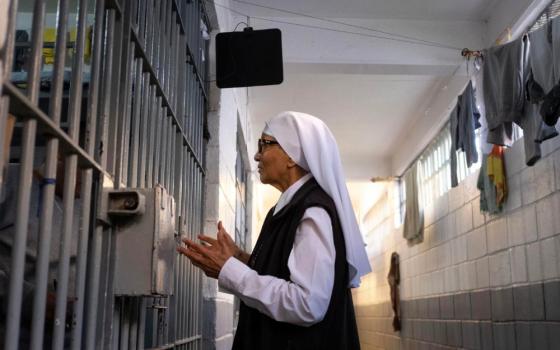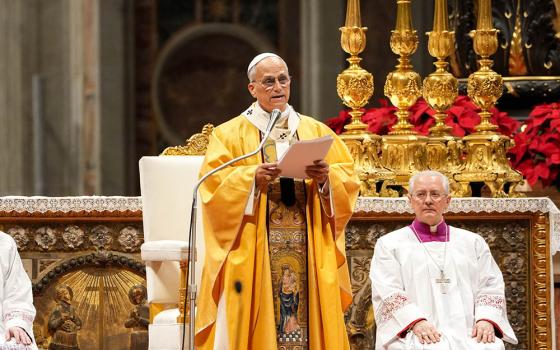
(Unsplash/tengyart)
As a Benedictine Oblate, I've visited many monasteries over the past 30 years or so — which I've mentioned before. One marvelous aspect of these visits is seeing how each community crafts its own unique version of the Liturgy of the Hours, or Divine Office.
What's been an added adventure in more recent years is delving deeply into these versions in order to correct the spelling and formatting of older editions, to make them more prayerful for those using them today.
My knowledge of computers and publication layout facilitated these efforts, with interesting side effects. It has been about more than just dumping words into the software and printing out the results. Each day — and especially the feast days — has its own "flavor," and matching the psalms with the appropriate antiphons, sung or spoken, augments the celebration or the theme of that day.
Whether the antiphon is sung, and the psalm chanted — a cappella or with an organ accompaniment — plays into the layout of the pages as well. It was easier, in many instances, to scan the music and drop it in as a photo in the midst of the text. Recreating melodies worn away by years of use or errors in the chosen key, though, provided a challenge when it came to learning yet another bit of computer software, one that places the notes on the staff without the need to use a pencil. Despite my history as a liturgical musician — studying music for over a decade as a youngster and even composing some pieces — the process was not always simple.
Somewhat a plus, somewhat a minus, because it took time to "defeat" the current notation programs — primarily those offered for free and rather "stripped down" — especially when the chants are written without standard musical timing such as 4/4, 3/4 or even 6/8.
The translation of the psalms is another consideration when undertaking a project of this type. Some Benedictines have opted for The Abbey Psalms and Canticles, an updated rendering of the Grail Psalms that is being integrated into Mass texts by the United States Conference of Catholic Bishops. Other communities prefer inclusive-language translations of the psalms, or a combination of translations drawn from assorted sources.
Advertisement
These considerations exposed me to a broad range of language variations, from the poetic to the stilted. And, somehow, I think the psalmists themselves meant these songs and poems to be more the former than the latter.
Setting aside the background of the Liturgy of the Hours' key ingredients, the office books are never short. Some Benedictine communities use a two-week cycle to incorporate the 150 psalms. Others go four weeks, or even five.
I still remember an interview I did in 2006 with Maxwell Johnson, at the time — and still — a professor at the University of Notre Dame. He had compiled and edited what he titled Benedictine Daily Prayer: A Short Breviary. With a count of more than 2,000 pages, the first question I asked him was, "How is this considered short?"
Compared to some of the volumes used through the ages in monasteries around the world, I discovered, it qualified for that designation.
When pulling together the daily prayers, the memorials, feasts and solemnities, the commons, and more, I've lost count of how many pages I've typed, proofread, printed and hole-punched for binders — the best choice these days in case updates or changes are made.
And there's always that extra set of eyes that finds the missed error, as when a certain sister popped into the pew beside me in the chapel one morning with a page open before her. That monastery's tradition was to chant side to side: Choir 1 and Choir 2, abbreviated C1 and C2 throughout the text.
Somehow, I'd added a "C3" to that day's psalmody.
"Is that the celestial choir?" she quipped.
Feeling like quite the idiot — and hoping that I'd already found all the mistakes and typos — I uttered an expletive that didn't really belong in such a sacred space.
Those closest — fortunately, it was early and the entire community wasn't present! — were a bit shocked but also found humor in the situation.
There's also a definite prayerfulness to be found in undertaking such a project. The soul becomes immersed in the words of the psalmists as fingers fly over the computer keyboard. It's a different type of prayer than when the Benedictines — or other religious communities or laypeople — are assembled in chapel, but it's still a very meaningful prayer. This work ensures that those who use the books are not distracted by having to worry about which ribbon or book marker comes next, and can have a truly prayerful experience.








